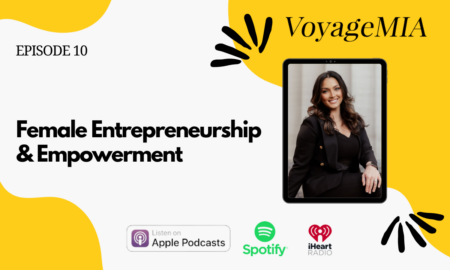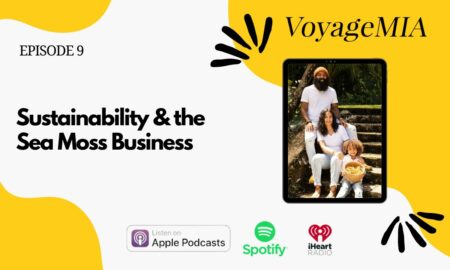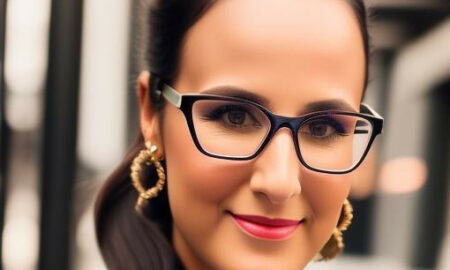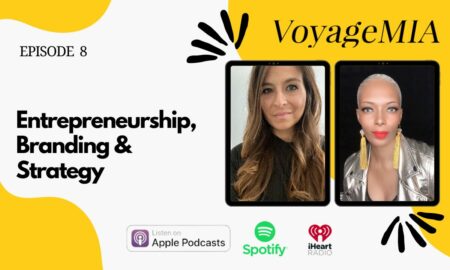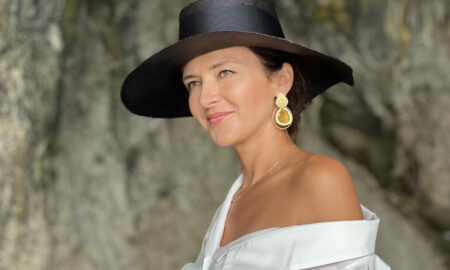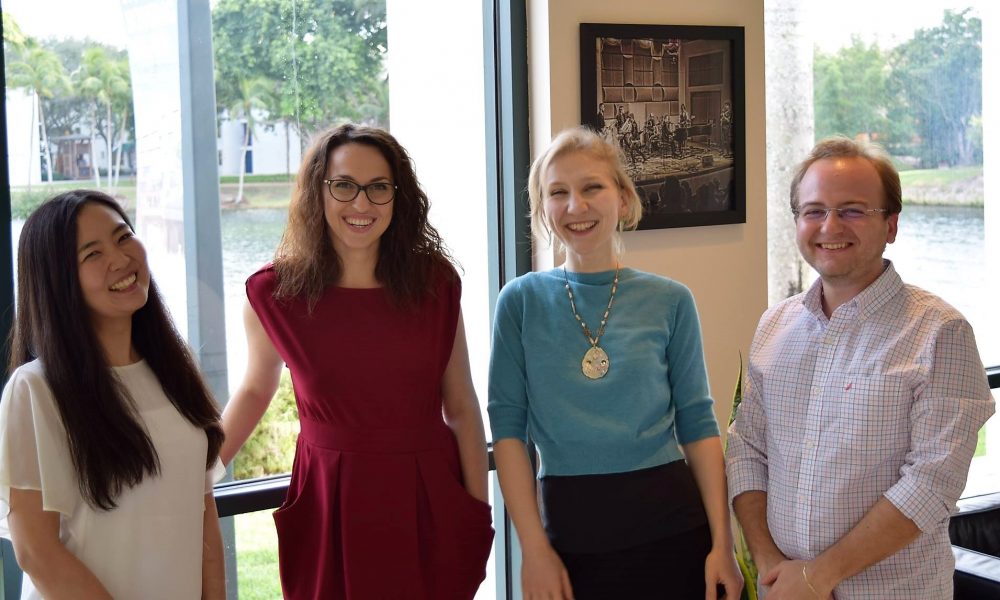

Today we’d like to introduce you to Kaleidoscope MusArt.
Kaleidoscope MusArt Concert Series began in November 2015. That fall, the founding members of the organization, Akina Yura, Maria Sumareva, Redi Llupa, Inesa Gegprifti, and Rodrigo Bussad, were still working towards their graduate degrees at the Frost School of Music. Although we all come from different cultural backgrounds, we found a common passion and vision in our love for newly-written and obscure music that one scarcely sees programmed in major institutions and concert venues. Our first concert, Soirée Japonaise, was so well received that we decided to embark on the difficult, yet rewarding journey of promoting this under-represented repertoire alongside beloved and well-known compositions in the canon. We are endlessly inspired in our collaborations with living composers, dynamic artists, and young talents.
Can you give our readers some background on your art?
As an organization, we strive to change the way that people look at classical music, by presenting works that are new, works that have been unjustly overlooked, and works that are universally-known and beloved on the same program. We create thematic connections between these different kinds of music, and in the process, we aim to open minds and hearts to new musical possibilities. One of our primary goals is to elicit attentive, emotionally invested, and reflective listening from our audience that goes beyond a common perception of classical music as merely “pleasant” and “relaxing.” We facilitate audience members’ connection to often unfamiliar music not only through the dynamism of our performers but also through in-concert conversations and pre-concert lectures that contextualize the music and reveal links between distant eras and cultures. In inviting our audience into the dynamic world of contemporary composition, we also provide opportunities for emerging artists and living composers to be heard. Our team members frequently appear as performing artists, featured composers, lecturers, and adjudicating panelists, yet we also contract/engage major artists from around the world in these roles. While simultaneously playing both the performative and administrative roles of the organization can be quite demanding, our greatest reward is to see a project come to fruition and to see the impact it has on all involved. Audience members have left our concerts in tears, inspired, puzzled or blown away. Having presented works by more than 25 living composers, we see how connecting with talented performers and hearing their works live inspires composers and fuels their creativity – and as performers of new music, we know first-hand how much an artist grows from working with composers, as well as the sense of excitement and purpose that interpreting their music creates.
Do you think conditions are generally improving for artists? What more can cities and communities do to improve conditions for artists?
Young artists entering the professional world face many challenges. In a society in which art is often regarded as entertainment, there is a tremendous pressure on the artists today to “package” themselves or to produce a “product” that can be sold. Buzzwords like “marketing” and “brand” are front-and-center within the academic and arts production fields. Although there has been an increased commercialization of art over time, the state and individual patronage that art has historically relied on, continue to be the most important pillars keeping the arts alive. We are very grateful for the cultural grant programs of Miami-Dade Division of Cultural Affairs, City of Coral Gables, as well as Florida State’s Division of Cultural Affairs, all of which have been vital to making our seasons possible. Events such as GiveMiami Day organized by The Miami Foundation are terrific opportunities for all nonprofits in the area, including those in the art world. We are tremendously grateful for the support of The Secular Humanist Fund at The Miami Foundation for supporting our seasons as well. It is these grant programs, our local partners such as the Hotel St. Michel, and individual donors and volunteers that make our programs possible.
Cities can help the arts thrive by shining a spotlight on arts organizations and the value they add to society. While it is often expected for arts organizations and individual artists to engage in some form of community outreach, rarely does one see community outreach efforts aimed at supporting the activities of the artists themselves. A culture of appreciation for the arts could be built through individual actions and company policies. For example, employers could offer concert tickets or museum admission to their employees as a bonus; something which could also benefit the employer in the way of boosting company morale, productivity, and well-being. Schools could organize more field trips to concerts and encourage students to volunteer for artistic events. Medical professionals should continue to embrace research that suggests that engagement with the arts are critical for maintaining mental and physical health. Radio and television stations could feature the work of local artists more frequently. It would be wonderful to see more corporate grants for supporting independent artists and projects. The arts have been proven to be economy boosters, and cities would help their own economies thrive by helping to increase engagement with the arts within the community. When the arts come to play such a central role in the community, philanthropists will also more clearly see the importance of keeping the arts vibrant with their support.
This level of community support for artists would allow them to dedicate much-needed time to perfect the execution of their projects rather than spending that time seeking funding. Perhaps the first step for all of this to happen is for media outlets to create more visibility for artists and arts organizations. That is why what VoyageMIA is doing, in giving a voice and presence to artists and organizations and allowing them to share their stories with a broad audience, is invaluable.
What’s the best way for someone to check out your work and provide support?
Our seasons typically run from September until May, and we have concerts almost every month, sometimes having multiple events per month. For example, this April we have four concerts and one masterclass. Our season will conclude with the Crumb’s Cosmos project, featuring a complete performance of George Crumb’s MAKROKOSMOS in 4 volumes. These concerts will take place at the University of Miami’s Clarke and Gusman halls on April 28 and 30, 2019 respectively. George Crumb is one of the most innovative and influential composers of the 20th and 21st centuries, and he is turning 90 this year! We are thrilled and proud to be presenting one of the two large-scale celebrations of George Crumb happening this year in the country.
You can support us by coming to these concerts and bringing your friends with you! We are always seeking volunteers and local partners who can help with our events as well as corporate/individual sponsors. We welcome new Board Members with experience in finance and marketing and other fields, and we are happy to connect with anyone interested in learning more about us and supporting our mission. We can be reached via email at info@kaleidoscopemusart.com.
Contact Info:
- Address: 8335 SW 72nd Ave. Apt. 113
Miami, FL 33143 - Website: www.kaleidoscopemusart.com
- Phone: 305-812-5768
- Email: info@kaleidoscopemusart.com
- Instagram: https://www.instagram.com/kaleidomusart/
- Facebook: https://www.facebook.com/KaleidoscopeMusArt/
- Twitter: https://twitter.com/kaleidomusart?lang=en
- Other: https://www.youtube.com/channel/UChUkh9oNrYC8OhWZopw58ng








Getting in touch: VoyageMIA is built on recommendations from the community; it’s how we uncover hidden gems, so if you know someone who deserves recognition please let us know here.












